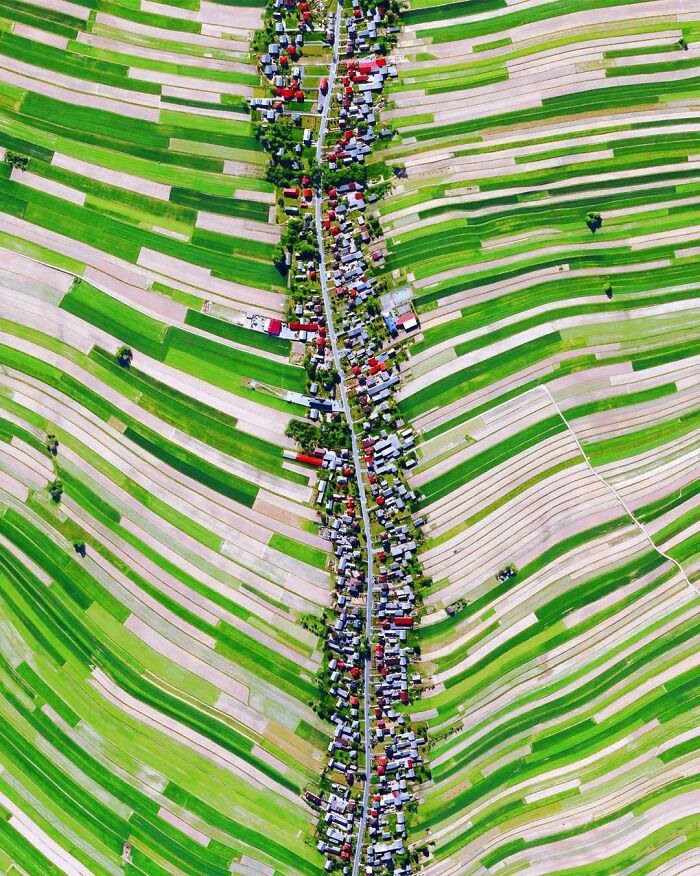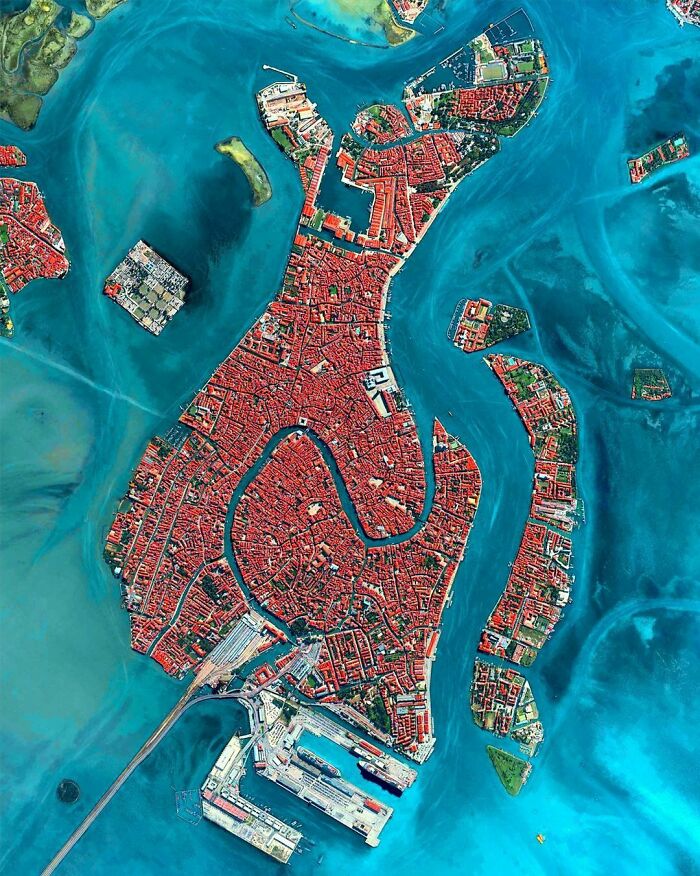Architectural facades often catch the eye first, but the true value of urban design is sometimes overlooked. Thankfully, the World Urban Planning Instagram account highlights a city’s infrastructure and design in a new light.
The account features striking aerial images, including Copacabana’s scenic coastlines, innovative infrastructure in Saudi Arabia, and lush greenery in a forested suburb in the Netherlands, among others.
We’ve compiled some notable photos for you. Scroll through this collection to see urban spaces from a different perspective.
1 Sapporo, Hokkaido, Japan

A well-maintained row of trees covers a large area just north of Sapporo city. This urban forest not only connects two green areas but also enhances the community’s livability and sustainability. Urban forests help remove pollutants from air and water, contribute to vibrant neighborhoods, and make streets more pleasant for walking. They improve the quality of daily life and can yield significant health benefits.
2. Palmanova, Udine Province, Italy

Palmanova was constructed in 1593 during the late Renaissance and is an example of a star fort from that period. Designed by Vincenzo Scamozzi, this nine-pointed star fort was intended to embody utopian ideals of city planning. In 1960, it was declared a national monument, and in 2017, it was inscribed on UNESCO’s World Heritage List.
3. Rennes, France

Rennes has a history spanning over 2,000 years. The city experienced significant growth from the 1950s onwards due to rural depopulation and industrial development. Originally planned to accommodate 200,000 people, Rennes now has a population of around 700,000, making it the seventh-largest city in France. The area north of the city center showcases a spiral development pattern.
The World Urban Planning Instagram page, which has over 65,000 followers, features not only major landmarks but also notable sites from various countries, including the Shanghai World Expo site, Munich’s BMW Tower, and a highway roundabout in the UAE desert.
4. Brøndby Garden City, Denmark

Located just 15 km west of Copenhagen, Brøndby Garden City reflects the Garden City movement inspired by Ebenezer Howard. Established in 1964, the city was designed to improve urban living by creating small garden areas around a central city. The circular layout of the gardens was intended to evoke a historical village with a central meeting place, fostering social interaction among residents.
5. Port Ariane, Lattes, France

Port Ariane is a marina in Lattes, a small commune with around 16,000 residents. To address occasional flooding in the city center, dykes and a spillway were constructed. The marina features a distinctive circular design with a small park in the center.
6. Forte de Nossa Senhora da Graça, Elvas, Portugal

Located just north of Elvas near the Spanish border, the Forte de Nossa Senhora da Graça (also known as Forte Conde de Lippe) is renowned for its well-preserved military architecture. The fort, designed by Marshal Lippe, is a quadrangle with pentagonal bastions and a central chapel. Elvas was designated a UNESCO World Heritage Site in 2012.
7. Carnaxide, Lisbon, Portugal

Carnaxide, a suburban area near Lisbon, features residential apartment buildings from the 1960s and 70s. Originally a third-level administrative parish of Lisbon dating back to the 13th century, it has evolved into a large residential complex visible in the aerial view.
8. Suloszowa, Poland

Suloszowa, a small village with around 6,000 residents, boasts one of the longest streets in Poland, stretching 9 km. Located 29 kilometers northwest of Krakow, it is near notable attractions such as Ojcowski National Park and the 14th-century Pieskowa Skała Castle.
9. Plaza de Tetuán, Barcelona, Spain

The Eixample district in Barcelona, designed by Ildefons Cerdà, features a grid pattern with long straight streets, wide avenues, and octagonal blocks with rounded corners. This layout enhances visibility and air circulation, making it a defining feature of the city.
10. Venice, Italy

Venice is an archipelago of 117 islands connected by 177 canals and 409 bridges. In the historic center, canals function as streets, with transportation predominantly by boat or on foot.